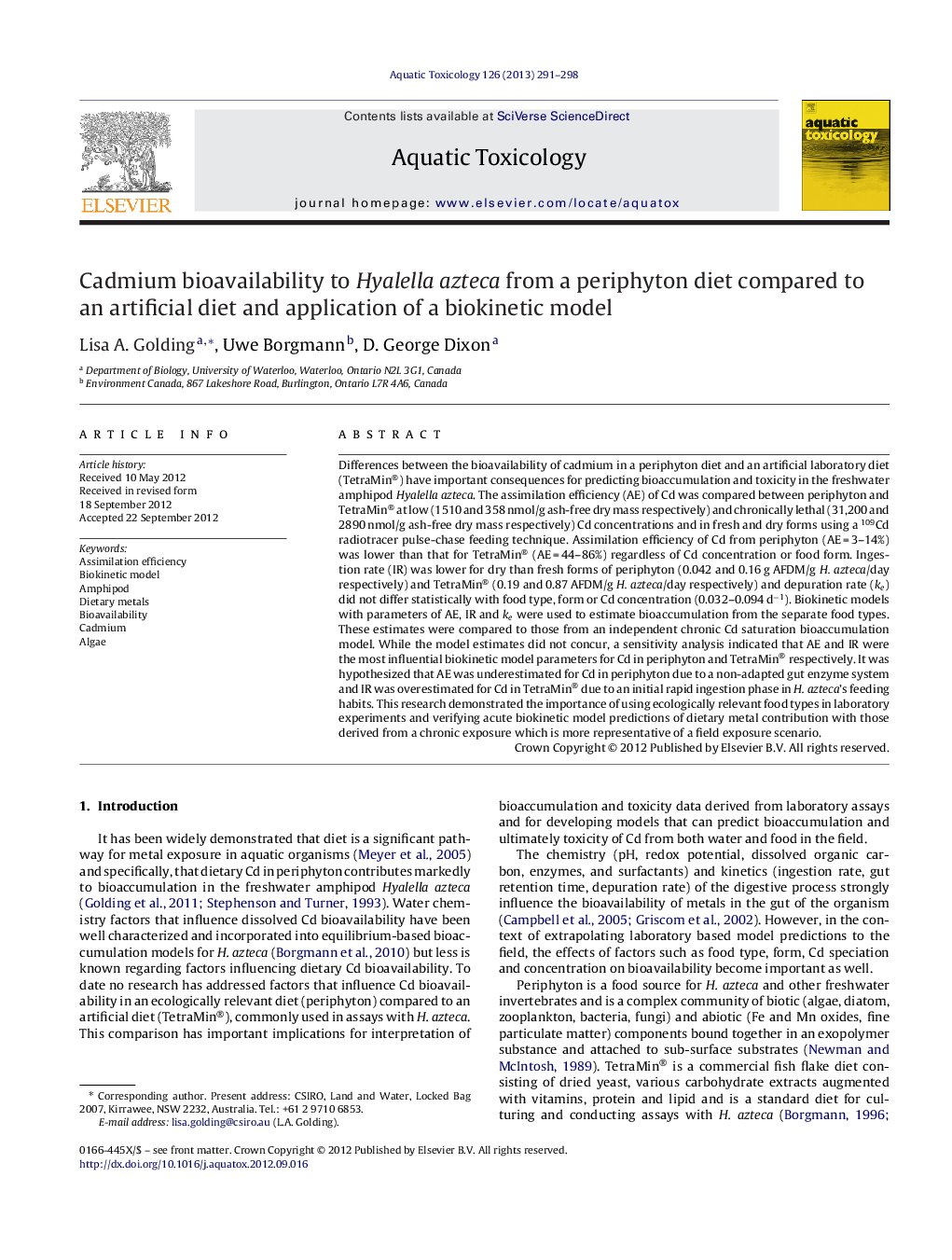| کد مقاله | کد نشریه | سال انتشار | مقاله انگلیسی | نسخه تمام متن |
|---|---|---|---|---|
| 4529612 | 1625970 | 2013 | 8 صفحه PDF | دانلود رایگان |

Differences between the bioavailability of cadmium in a periphyton diet and an artificial laboratory diet (TetraMin®) have important consequences for predicting bioaccumulation and toxicity in the freshwater amphipod Hyalella azteca. The assimilation efficiency (AE) of Cd was compared between periphyton and TetraMin® at low (1510 and 358 nmol/g ash-free dry mass respectively) and chronically lethal (31,200 and 2890 nmol/g ash-free dry mass respectively) Cd concentrations and in fresh and dry forms using a 109Cd radiotracer pulse-chase feeding technique. Assimilation efficiency of Cd from periphyton (AE = 3–14%) was lower than that for TetraMin® (AE = 44–86%) regardless of Cd concentration or food form. Ingestion rate (IR) was lower for dry than fresh forms of periphyton (0.042 and 0.16 g AFDM/g H. azteca/day respectively) and TetraMin® (0.19 and 0.87 AFDM/g H. azteca/day respectively) and depuration rate (ke) did not differ statistically with food type, form or Cd concentration (0.032–0.094 d−1). Biokinetic models with parameters of AE, IR and ke were used to estimate bioaccumulation from the separate food types. These estimates were compared to those from an independent chronic Cd saturation bioaccumulation model. While the model estimates did not concur, a sensitivity analysis indicated that AE and IR were the most influential biokinetic model parameters for Cd in periphyton and TetraMin® respectively. It was hypothesized that AE was underestimated for Cd in periphyton due to a non-adapted gut enzyme system and IR was overestimated for Cd in TetraMin® due to an initial rapid ingestion phase in H. azteca's feeding habits. This research demonstrated the importance of using ecologically relevant food types in laboratory experiments and verifying acute biokinetic model predictions of dietary metal contribution with those derived from a chronic exposure which is more representative of a field exposure scenario.
► Cd assimilation efficiency is lower for periphyton than TetraMin®.
► Ingestion rate is lower for dried food than fresh food.
► Depuration rate is not influenced by food type, form or Cd concentration.
► Surface bound Cd is more bioavailable than biologically incorporated Cd.
► Biokinetic models need to consider chronic toxic effects on model parameters.
Journal: Aquatic Toxicology - Volume 126, 15 January 2013, Pages 291–298